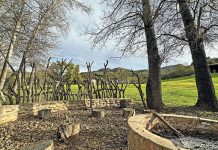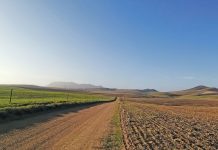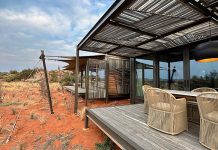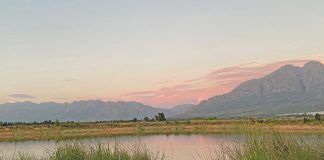When I was still a boy I made the front page of a newspaper for spotting a UFO. It turned out to be a weather balloon. Back then the information gathered by these balloons was all climatologists could base their weather forecasts on. I’m amazed that with all the modern-day weather satellites spinning around our planet and our computers, climatologists are no more accurate today than in those days.
You certainly don’t need more than a forked stick and a primary school education to predict a 60% chance of rain and when nothing happens to say, “Remember there was a 40% chance of no rain.”
For people engaged in field sports activities, weather forecasting is very important. Some years ago there was great controversy about attempts to make rain by dropping chemicals on to clouds.
I’m not sure whether the practice still continues, but if so it surely still falls under the Department of Transport which also builds and maintains our roads, because what I see is a drought rapidly developing into a national ecological disaster.
Fortunately, He who is the great rainmaker and can bless us with relief does not depend on the competency of civil servants, or else we might suffer a drought every year.
While we are gasping in the heat of the past weeks, it’s difficult to comprehend that simultaneously people in neighbouring Mozambique are drowning of too much rain, brought about by tropical cyclone Favio. You only realise that a major flood can be more devastating than a drought if you have lived through one – and I have, as I was in the epicentre of Demoina when it struck the Zululand coast in 1984.
Compared with the flat coastal plains of Mozambique, the topography of Zululand is more suitable to deal with the effects of flooding, and may in fact have been shaped by it through the ages. At the time we were living on high ground at the confluence of the Enseleni and Cwaka Rivers at the Owen Sithole College of Agriculture, 25km inland from Empangeni.
Just as the current drought was not predicted, Demoina stuck us without any warning. Days of very hot weather preceded a morning on which black clouds rolled in from the sea. As usual my wife went to work and my two sons to school in town in our Cortina station wagon.
By mid-morning it started to rain, not in drops but in buckets. By midday the Cwaka River that flowed through our game park was in flood and the larger Enseleni was rising fast. I phoned my wife, telling her to fetch the children and come home as I feared the small bridge over the Kulu River on their way home might flood, but when they reached the river the bridge was already under water. A ll I could do was brave a few streams, sometimes driving through the veld with my big International 4×4, to reach Mtubatuba and then over the big concrete bridge over the Umfolozi on the northern highway to fetch my family, leaving the Cortina in town.
On our return the small Cwaka River, usually narrow enough to step over in most places, was a sea, and the most level area where I crossed was almost 1km wide.
On reaching the house we heard over the radio that the huge bridge, over which we had just crossed the Umfolozi, was gone together with the traffic officer we saw on duty on the bridge. Most of the rain fell in three days – 522mm, 252mm and 225mm respectively. total of 999mm.
We were totally cut off for weeks from head office and the devastation was horrendous. Apart from the bridges, dams and roads that washed away, whole ploughed fields were stripped of all topsoil – sometimes right down to bedrock. One farmstead complex along the Umfolozi was completely covered by 20m of sand. The whole countryside was so altered that nobody knew where to look for the farmhouse. It remains buried to this day.
T he 3km-long dam on the college farm just made it, but all that remained of my 50m treated, pole-reinforced shooting range was buckets full of bullets too heavy for the floodwater to carry away. But I almost got carried away when I was sent in an Isuzu 4×4 to recover an official vehicle that was stuck beyond the Cwaka River. On reaching the bridge, which was still swamped, I sent someone ahead to inspect, but he failed to go all the way. When I did a test run, I forgot to open the tailgate. Just as I passed the far-end railings I fell into a rut carved by the flood, sucked water into the air intake and started to float from the buoyancy of the empty cab and load box. I quickly opened the cab doors to let water into the cab which saved me from going over the edge into the raging 10m-deep river.
Flood is no joke, so pray for rain – but please don’t ask for too much. – Abré J Steyn Contact Abré J Steyn on 083 253 4822. |fw













